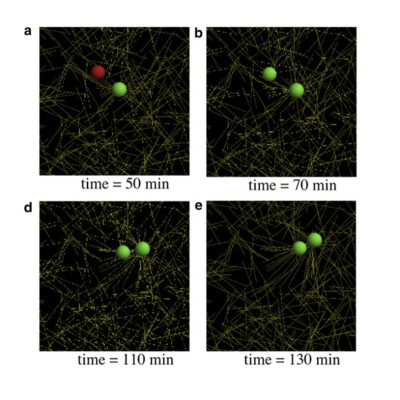Publication
Computational modeling of single-cell migration: the leading role of extracellular matrix fibers
D.K. Schlüter, I. Ramis-Conde, M.A. J. Chaplain
Biophysical Journal. 103, 1141-1151 (2012)
MOLAB authors
Abstract
Cell migration is vitally important in a wide variety of biological contexts ranging from embryonic development and wound healing to malignant diseases such as cancer. It is a very complex process that is controlled by intracellular signaling pathways as well as the cell’s microenvironment. Due to its importance and complexity, it has been studied for many years in the biomedical sciences, and in the last 30 years it also received an increasing amount of interest from theoretical scientists and mathematical modelers. Here we propose a force-based, individual-based modeling framework that links single-cell migration with matrix fibers and cell-matrix interactions through contact guidance and matrix remodelling. With this approach, we can highlight the effect of the cell’s environment on its migration. We investigate the influence of matrix stiffness, matrix architecture, and cell speed on migration using quantitative measures that allow us to compare the results to experiments.















